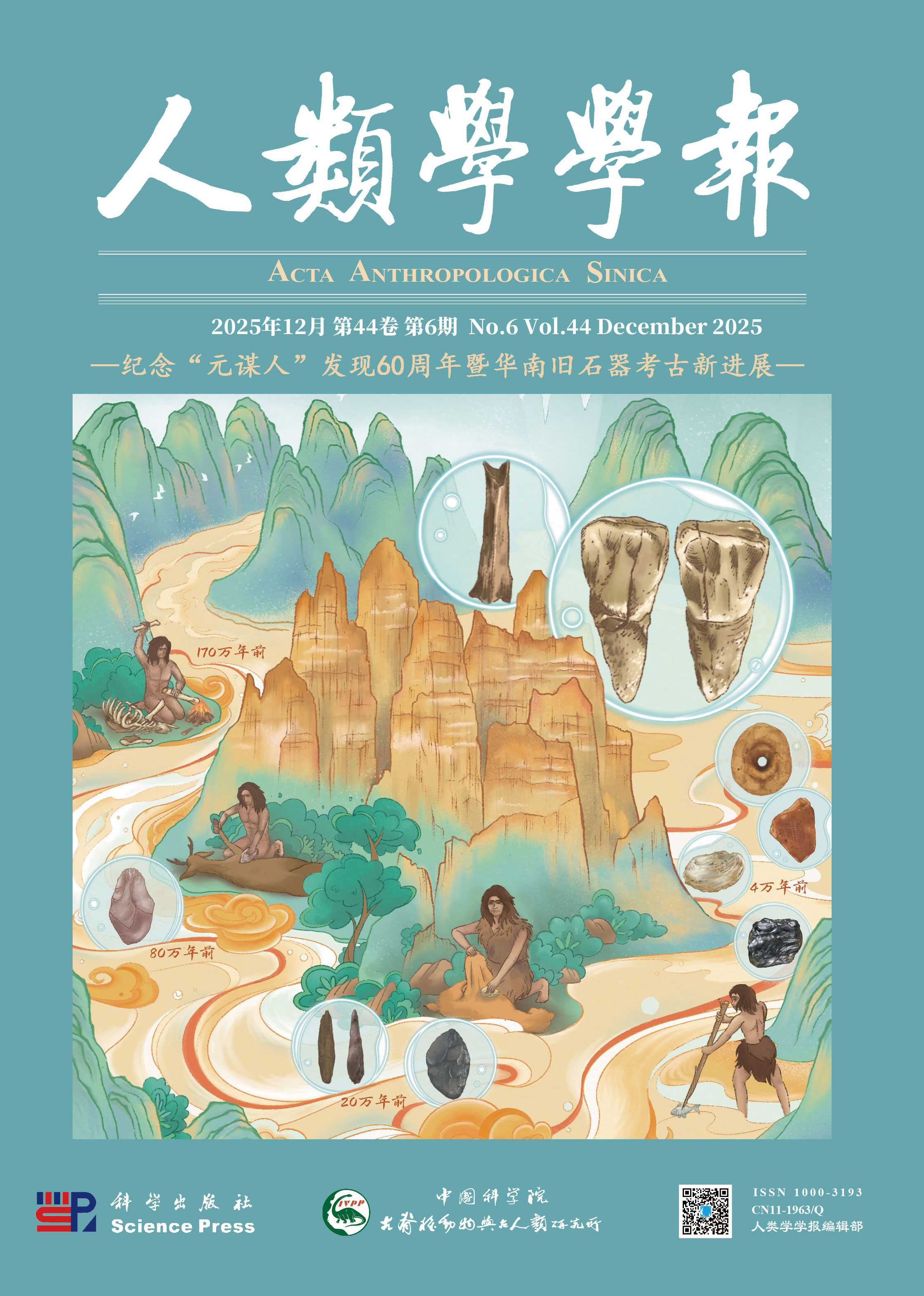A study on the stone artifacts from 2004 field investigation in Danjiangkou reservoir area, Hubei and Henan, China
LI Hao; LI Chao-rong; FENG Xing-wu
2012, 31(02):
113-126.
 Asbtract
(
272 )
Asbtract
(
272 )
 PDF (3106KB)
(
131
)
Related Articles |
Metrics
PDF (3106KB)
(
131
)
Related Articles |
Metrics
Danjiangkou? reservoir?is? located? in ?the ?northwest ?of ?Hubei ?province ?and ?southwest ?of? Henan province at the headwaters area of the Middle Route of the South-to-North Water Transfer Project.? In? October,? 2004,? the? field? team? of? IVPP? conducted? a? survey? around? the? margin? of? the? reservoir that will later be submerged upon completing a new section of the dam. The present paper? focuses? on? the? study? of? 367? lithic? artifacts? collected? from? 43? open? field? sites,? distributed? upon different terraces along the Hanshui River and its tributary Danjiang River. Among them, 1 site was located on the forth terrace; 8 sites were located on the third terrace; 19 sites were located on the second terrace. Also 1 site was located on the third terrace of Danjiang tributary; 14 sites were located on the second terrace of this tributary.
The Yunxian Man site, located on the forth terrace of Hanshui River was dated through faunal association and paleomagenetics methods at 0.83-0.87Ma BP. The deposites of the third terrace are red clay, containing cobbles and calcareous nodules. The develop of red clay in this region didn’t reach the degree of the laterite weathering that was formed in strong weathering process of desiliceous and enriched bauxite, associated with the formation of gibbsite in Guangdong and Guangxi provinces. Instead, it corresponds roughly to the red soil weathering crust stage in southern China. Middle Pleistocene was the optimum weathering period in southern China where the northern boundary of the red soil weathering crust reached the south of the Qinling Mountain. The survey area is located in the north boundary of the red soil weathering crust, so its age should fall within the optimum period of the development of red weathering crust. The study of the loess-paleosol sequence showed that paleosol S5-S4 was an intense humid-warm stage in the? Middle? Pleistocene? within? the? range? of? 0.7-0.4Ma? BP.? Because? of? this,? we? think? the? age? of? the third terrace maybe belongs to the early-to-middle Middle Pleistocene. The age of the second terrace,? based? on? geomorphological ?survey,? likely ?belongs? to? the ?Late ?Pleistocene.?
Early? hominids? living? at? the? Hanshui? River? and? Danjiang? tributary,? near? the? Danjiangkou? reservoir,? selected? cobbles? as? raw? material? from? nearby? gravel? levels? of? a? river? bank? for? making? stone? artifacts.? The? artifacts? include? cores,? flakes,? chopper-chopping? tools,? scrapers,? spheroids,? picks? and? handaxes.? The? predominant? raw? materials? are? quartz? and? siliceous? limestone,? and? secondarily,? quartzite,? sandstone? and? quartz? sandstone.? Generally? speaking,? quartz? is? the? most? common? material? amongst? cores? and? flakes,? while? the? heavy-duty? tools,? like? picks? and? handaxes, were mostly composed of siliceous limestone. This shows distinct selection criteria for? raw? materials? amongst? these? early? hominids.?At? Danjiangkou? reservoir? area,? flakes? are? the? most abundant artifacts, accounting for 29.43% of the total assemblage, most of them ranging from? medium? to? large? size(≥50mm).? Within? the? tool? category,? 91? were? made? from? cobble? blanks,? accounting? for? 71.09%;? 31? were? made? from? medium? and? large? flake? blanks,? accounting? for? 24.22%;? and? 6? were? made? from? blocks.? Chopper-chopping? tools? were? made? mainly? from? cobbles,? among? them? 56? were? unifacial? worked,? accounting? for? 64.37%;? while? the? remaining? 31? were? bifacial? worked.? Scrapers? were? mainly? made? from? medium? and? large? flake,? meanwhile,? there? were? some? small? size? scrapers? made? from? quartz? flakes,? which? are? similar? to? the? light- duty?tools?in?northern?China.?Picks?were?all?unifacial?working?and?had?a?relatively?low?intensity? of reduction, furthermore, retouch was mainly focused on the distal end which preserved a high proportion of cortex. Handaxes have symmetrical features, with a cutting edge typically spanning? more? than? half ?of ?the ?length ?of ?the ?body,?while? some ?specimens? were? fully ?worked.?But? considering that siliceous limestone is a poor-quality raw material with a very platy structure, it? is? difficult? to? control? the? fracturing? properties,? so? there? is? some? variation? within? the? observed? degree? of? symmetry.? The? handaxes? discovered? in? Danjiangkou? reservoir? area,? on? one? hand? suggest that the raw material has a certain influence upon the form of handaxes, and on the other? hand? suggest? that? early? hominids? were? cognitive? capable? of? planning? ahead.? Specifically,? an‘operative scheme’or a planned set of actions, was necessary for producing the handaxes of the Danjiangkou?reservoir?area.?The? handaxes? in? Danjiangkou? reservoir? area? offer? new? material? to? discuss? diffusion? and? cultural? communication of early hominids, and we hope it will generate more scholarly concern towards these issues, especially amongst our foreign counterparts.









